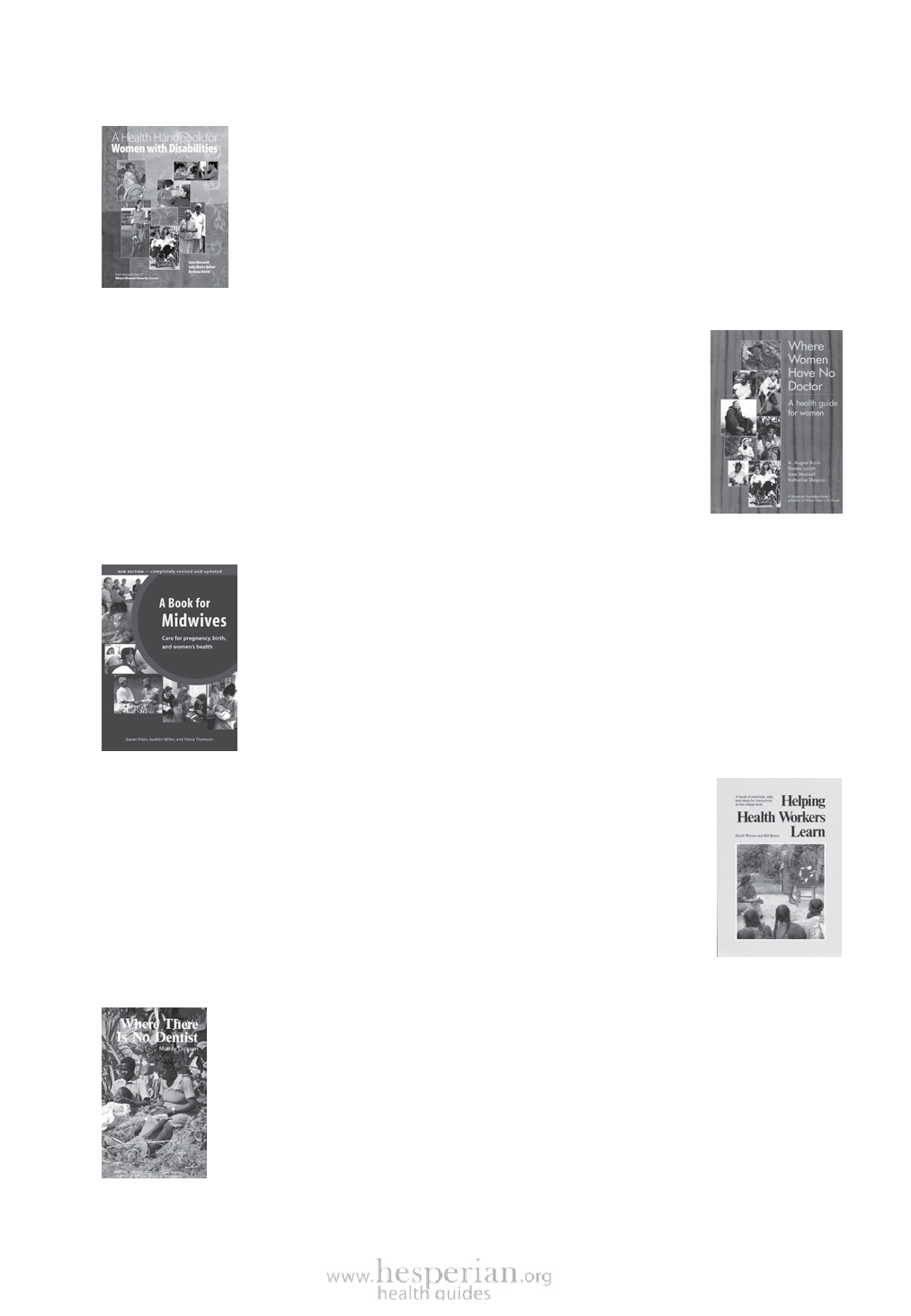
Other Books from Hesperian
A Health Handbook for Women with Disabilities, by Jane Maxwell,
Julia Watts Belser, and Darlena David. The social stigma of disability
and inadequate care are often greater barriers to health than
disabilities themselves. This groundbreaking handbook, full of useful
advice and suggestions from women with disabilities worldwide,
will help women with disabilities improve their general health, self-
esteem, and abilities to care for themselves and participate in their
communities. 406 pages.
Where Women Have No Doctor, by A. August Burns, Ronnie
Lovich, Jane Maxwell, and Katharine Shapiro, combines self-help
medical information with an understanding of the ways poverty,
discrimination, and cultural beliefs limit women’s health and access
to care. Clearly written and with over 1,000 drawings, this book is
an essential resource for any woman who wants to improve her
health, and for health workers who want more information about the
problems that affect only women, or that affect women differently
from men. 584 pages.
A Book for Midwives, by Susan Klein, Suellen Miller, and Fiona
Thomson, completely revised in 2005, is for midwives, community
health workers, and anyone concerned about the health of women
and babies in pregnancy, birth and beyond. An invaluable tool for
training as well as a practical reference, it covers helping pregnant
women stay healthy, care during and after birth, handling obstetric
complications, breastfeeding, and includes expanded information
for women’s reproductive health care. 544 pages.
Helping Health Workers Learn, by David Werner and Bill Bower, is an
indispensable resource for anyone involved in teaching about health.
This heavily illustrated book shows how to make health education fun
and effective. Includes activities for mothers and children; pointers for
using theater, flannel-boards, and other techniques; and many ideas
for producing low-cost teaching aids. Emphasizing a people-centered
approach to health care, it presents strategies for effective community
involvement through participatory education. 640 pages.
Where There Is No Dentist, by Murray Dickson, shows how to care
for the teeth and gums, and prevent tooth and gum problems through
hygiene, nutrition, and education. Includes detailed, well-illustrated
information on using dental equipment, placing fillings, taking out
teeth, and more. A new chapter includes material on HIV and oral
health. 237 pages.